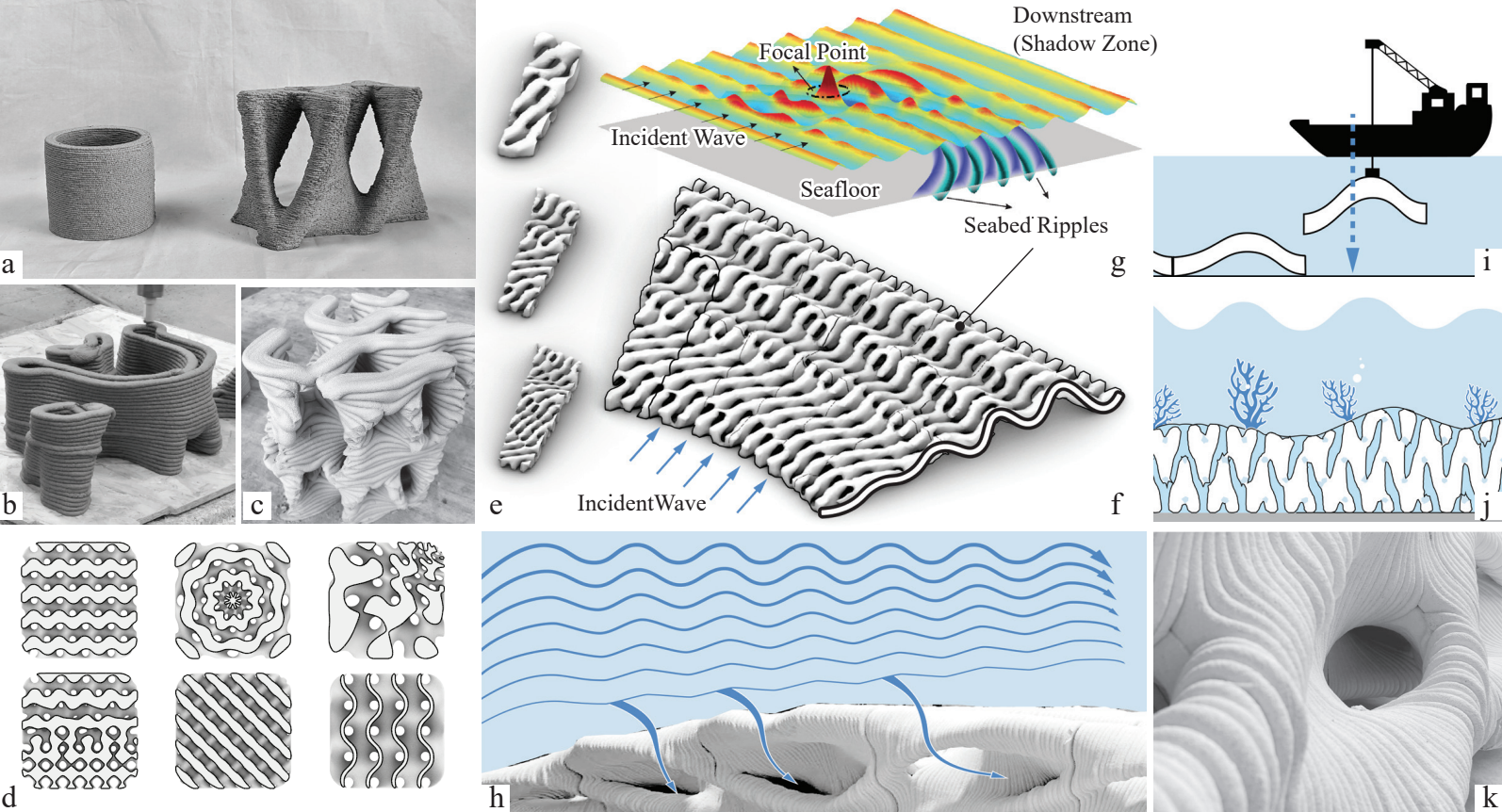
In the race to power the world with renewable energy, Shu Yang, Joseph Bordogna Professor and Chair of Materials Science and Engineering (MSE), looks to an underutilized resource from the ocean: wave energy. Energy from ocean waves could provide about 10% of the world’s electricity needs, reducing more than 3% of global carbon dioxide production. In the United States, around 50% of the population lives within 50 miles of a coastline. Providing access to wave energy would help transition coastal communities from fossil fuel-based to renewable economies more efficiently and equitably. But, this relatively untapped energy source needs creative problem solving to be successfully leveraged.
In collaboration with project lead Masoud Akbarzadeh, Associate Professor of Architecture at Penn’s Weitzman School of Design, Yang aims to create artificial reef structures inspired by the topography and porosity of oyster, coral and shell reefs with low-cost and recycled carbonated materials. Funded by a National Science Foundation grant, this research will bring together a highly collaborative and synergistic team of architects, wave engineers and materials scientists, including Reza Alam, Professor of Mechanical Engineering at UC Berkeley.
The artificial reefs that the team will design and fabricate have the potential to do much more than help increase the efficiency of ocean waves’ energy.
“The project has multiple goals,” says Yang. “We want to create structures that not only help harness wave energy more efficiently, but that also mitigate intense wave energy that is already eroding and threatening coastal environments around the globe.”
Yang’s lab is in charge of developing materials that are safe for and tolerant of the marine environment. These materials are 3D printed on the meter scale in Akbarzadeh’s lab. Alam and colleagues at UC Berkeley will then test the structures’ ability to harness and mitigate wave energy under various conditions, including high-intensity waves that result from hurricanes and storms, which are predicted to increase in frequency and severity.
“Wave energy has been a tantalizing prospect for decades,” says Alam. “However, current wave energy-harnessing devices have struggled to overcome the fundamental challenges posed by the harsh and complex ocean environment, with its highly nonlinear fluid dynamics. The key to unlocking this potential lies in developing technology that can direct wave power to specific focal points. By designing structures that focus wave energy more efficiently, we could significantly reduce the number of wave-energy harnessing devices required, thereby lowering costs and making wave power more affordable and accessible.”
The team’s nature-inspired design also provides microhabitats and substrate for marine organisms to colonize, further increasing the structures’ ability to mitigate wave energy.
“Current wave energy-harnessing devices are advancing every day. However, the question is how to tune these devices with the environment and, most importantly, how we can shape the seabed to generate energy and create biodiversity,” says Akbarzadeh. “We generate structural shapes that mimic a reef structure full of pores and curves on a meso scale and have macro-scale undulations. The undulations will enhance energy generation, and by mimicking reef shapes and prioritizing creating microhabitats for ocean life, our structures will have minimal interruption of marine life and may even encourage increased biodiversity in these systems.”
“That’s why choosing materials that are compatible with marine life and promote cell adhesion and settlement of reef-building organisms is so important,” adds Yang. “We want our structures to work with nature, not against it.”
Yang plans to build these structures out of leftover quarry-based products typically wasted in the mining process. These products contain natural minerals rich in calcium carbonate, the same material shells and coral reefs are made from. Reusing these products not only provides a marine-tolerant material solution it also contributes to advancing the use of recycled and reused natural materials in the fields of material science and construction.
By designing structures aligned with nature, this research will significantly improve the efficiency of wave energy conversion to electricity; vastly reduce the number, size, cost and deployment area of wave energy capturing devices in the ocean; leave more space for ocean activities; and provide new habitats for marine organisms and promote natural reef growth.
Funds from this grant will also support the training of a diverse group of students in developing resilient, sustainable, and equitable systems, technologies and solutions to meet evolving societal and environmental challenges.
“I am looking forward to bringing new materials to the ocean to solve multiple problems,” says Yang. “In the future, I can see this project overlapping with work being done at Penn in underwater sampling and robotics as well as investigating the immense bacterial life in the ocean as a source of new biomaterials.
“These kinds of collaborations lead to more collaborations,” she continues. “I am always thrilled to apply my expertise to environmental problems, and I continue to find myself coming back to the ocean in particular to find nature-based solutions we can adopt to address so many different climate change consequences.”
To learn more visit the Shu Yang Group website.
